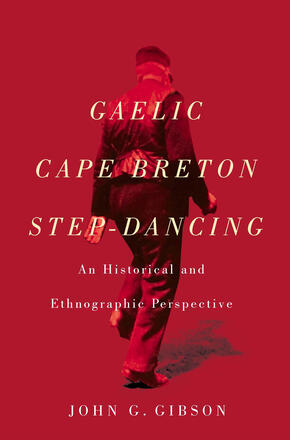
Gaelic Cape Breton Step-Dancing
An Historical and Ethnographic Perspective
Placing the phenomenon of Gaelic Cape Breton step-dancing into an historical perspective.
Description
The step-dancing of the Scotch Gaels in Nova Scotia is the last living example of a form of dance that waned following the great emigrations to Canada that ended in 1845. The Scotch Gael has been reported as loving dance, but step-dancing in Scotland had all but disappeared by 1945. One must look to Gaelic Nova Scotia, Cape Breton, and Antigonish County, to find this tradition. Gaelic Cape Breton Step-Dancing, the first study of its kind, gives this art form and the people and culture associated with it the prominence they have long deserved. Gaelic Scotland’s cultural record is by and large pre-literate, and references to dance have had to be sought in Gaelic songs, many of which were transcribed on paper by those who knew their culture might be lost with the decline of their language. The improved Scottish culture depended proudly on the teaching of dancing and the literate learning and transmission of music in accompaniment. Relying on fieldwork in Nova Scotia, and on mentions of dance in Gaelic song and verse in Scotland and Nova Scotia, John Gibson traces the historical roots of step-dancing, particularly the older forms of dancing originating in the Gaelic–speaking Scottish Highlands. He also places the current tradition as a development and part of the much larger British and European percussive dance tradition. With insight collected through written sources, tales, songs, manuscripts, book references, interviews, and conversations, Gaelic Cape Breton Step-Dancing brings an important aspect of Gaelic history to the forefront of cultural debate.
Reviews
“John Gibson has dedicated himself to a topic of central importance to Scottish ethnology, has consulted every source worth considering, and has incorporated a wide variety of Gaelic material. He has made a very significant contribution to Gaelic ethnology with this book, and the information provided here will be welcomed by both scholars and exponents of Gaelic dance and music.” William Lamb, University of Edinburgh
“The detective work Gibson has done in uncovering the many fragments where dance and dancing of this kind are mentioned is extremely significant and considerable. The way he cross-references the dance material with that of song and storytelling lore, for example, is a very good way of illustrating parallels. Gaelic Cape Breton Step-Dancing should appeal broadly to dance scholars and people interested in dance in general.” Mats Melin, University of Limerick and author of One with the Music: Cape Breton Dancing Tradition and Transmission